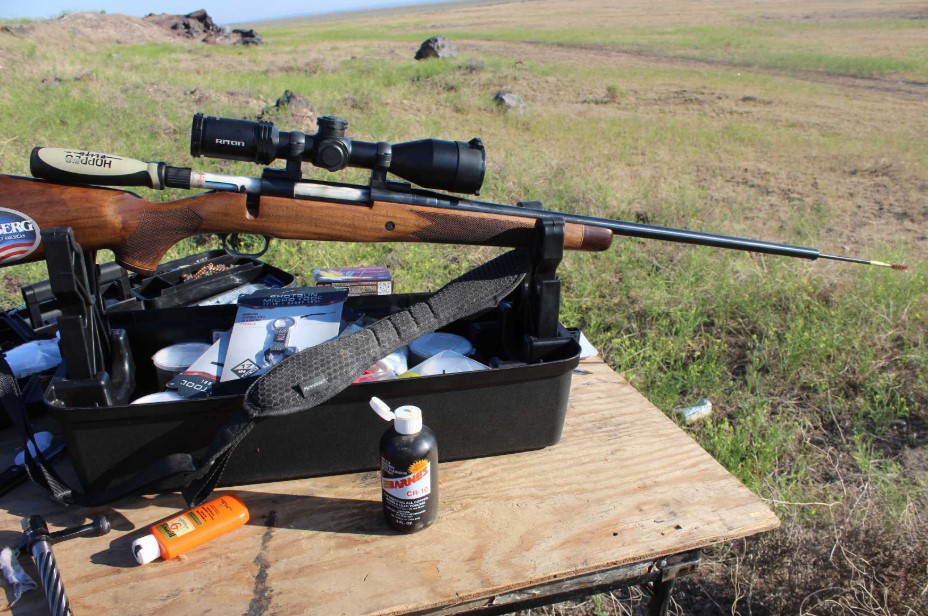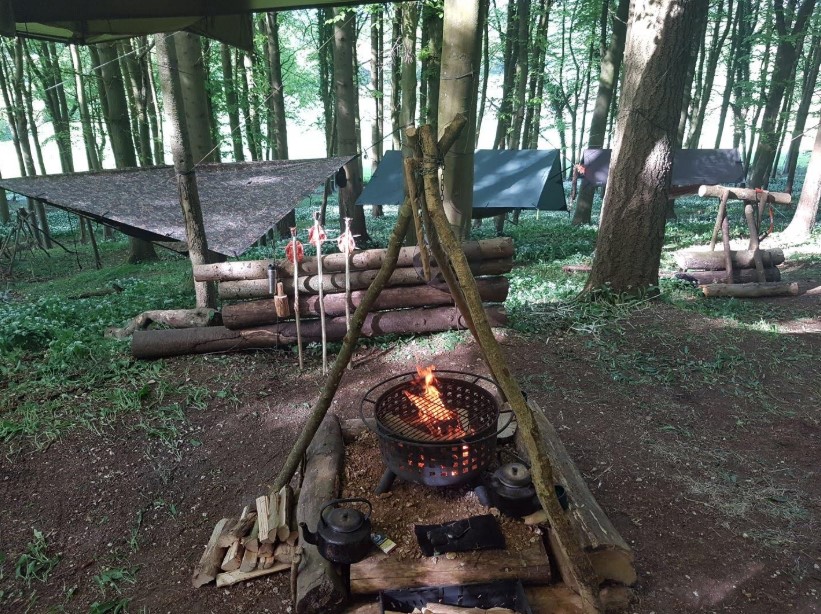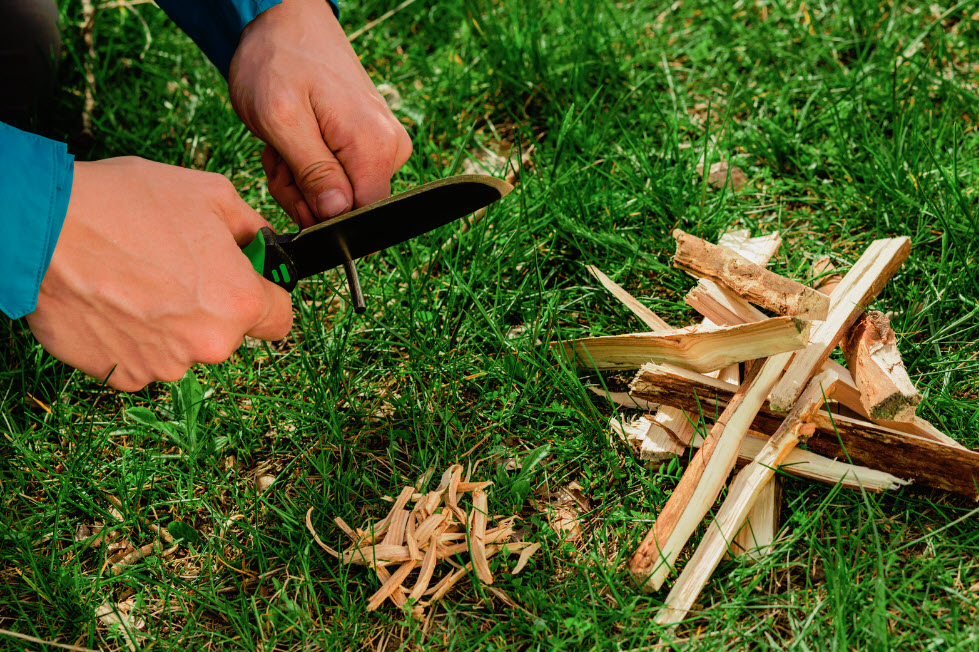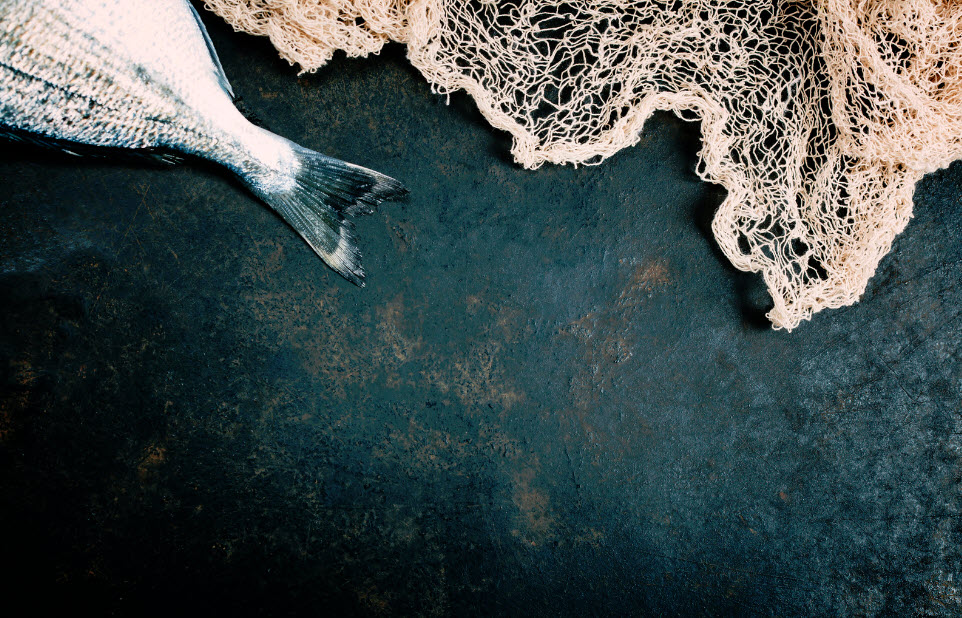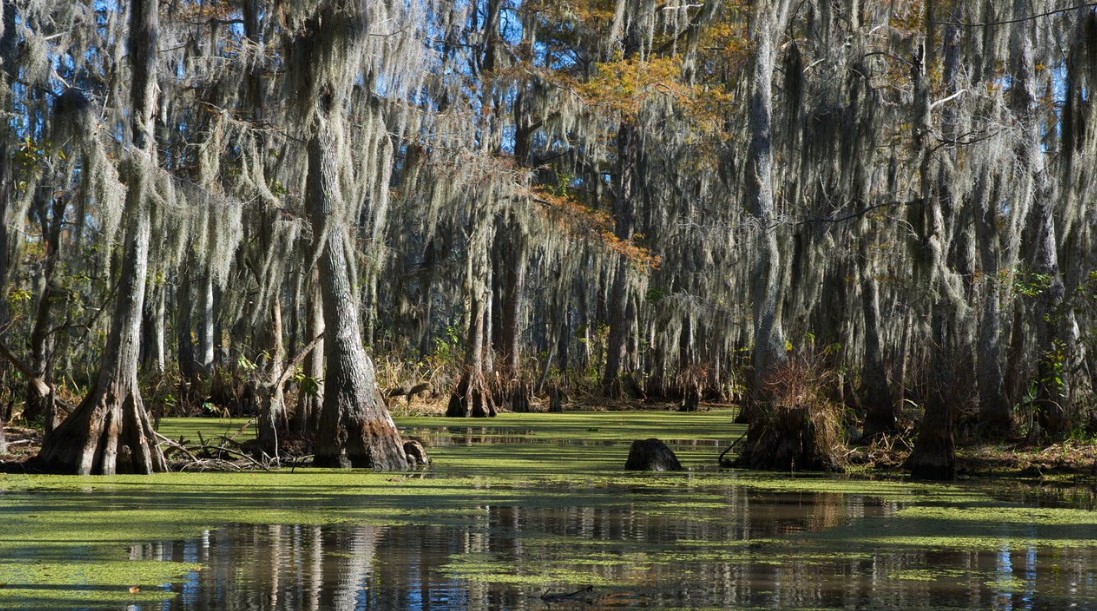
Many are going to find walking through a bog, marsh, and swamp areas quite tricky, but you should always focus on the great things surrounding you. It makes sense that you have waterproof equipment when walking in a swamp. But is that enough? Should you ever go alone or some sticks are going to be enough help for you?
As long as you’re taking all the safety measures, walking and surviving in a swamp can be easy. Scroll down to find out how!
Page Contents
What to wear when taking a walk in the swamp?
Looking for waterproof clothes and hoping for the best isn’t going to cut it, especially if your walk in the swamp is going to take a lot more than an hour.
Here are some things you should remember when your trip may take you to a swamp:
- Get a cotton shirt &synthetic hiking pants/shorts
If you’re a survivalist, the chances are that you’re also wearing some bulky gear too, which is why you should wear light clothes. You’re not going to get overheated, and you’re going to move easier through the swamp.
Some synthetic pants/shorts and a cotton shirt are the perfect combo for a swamp walk. When synthetic fabric doesn’t do it for you (it dries out fast and is excellent for the outdoor adventures, though), get clothes made with light material (cotton or mesh). You should also wear synthetic underwear- not getting overheated is essential.
- Wear waterproof boots and good socks
Ideally, you should wear some waterproof boots when hiking, swamp walking included. You need to keep your feet dry at all time so put on wool or synthetic socks as well.
The last thing you want is to get your feet wet and exposed to bacteria in the swamp- so make sure that you buy waterproof boots!
Of course, another option would be that of going barefoot. That would prevent your boots from getting wet and muddy, and possibly altogether losing them in the thick mud. But walking barefoot is not without its risks, and should be reserved to the more experienced survivors.
- Put on some gloves
When you’re walking through a swamp, you don’t want to get your hands dirty or wet. Look for a pair of synthetic and waterproof gloves. Not touching the water swamp (which may contain bacteria) is one way to stay safe through this kind of hike.
- Cover your head
You should cover your head with a hat or a bandana no matter where you’re hiking. You want to keep the sun away from your scalp and face. When you’re walking, the chances are that you’ll be in the sun a lot.
- Wear the waterproof gear
Planning is fundamental when hiking so a walk in the swamp shouldn’t come as a surprise to you. You want to prepare so buy a waterproof jacket, waterproof pants, and anything else to protect yourself from bacteria in the swamp water and dirt.
Being meticulous and taking control is fundamental for surviving in the outdoors, including when walking through a swamp.
Here are some of the tips to follow when walking through a swamp:
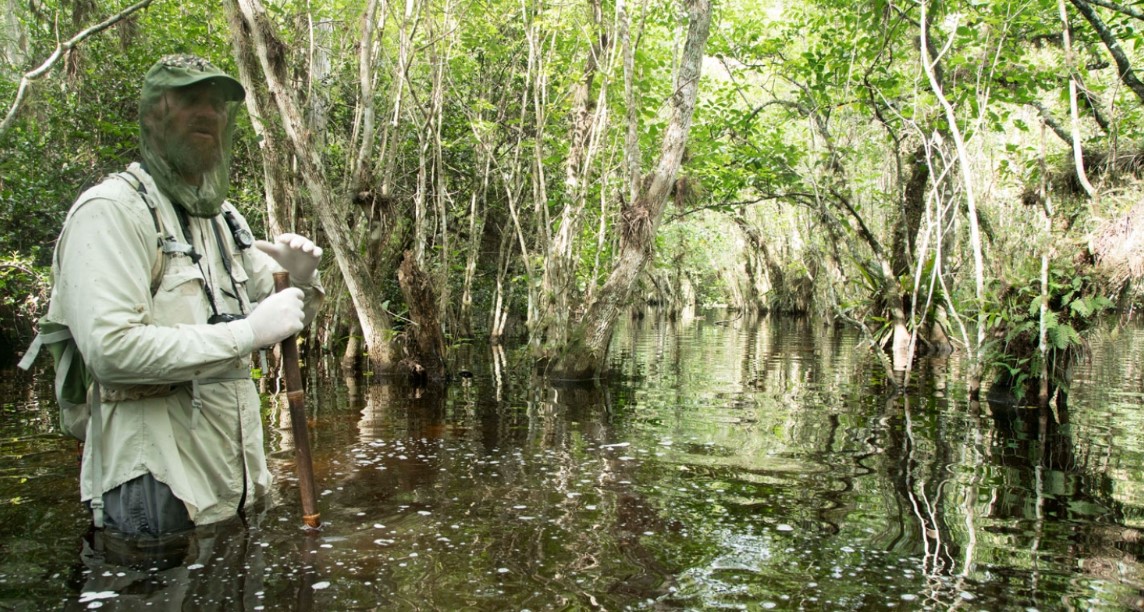
- Follow a map
No matter how great your smartwatch is, you should never go hiking without a map. Some things are never going to change, and a map is one of the many. You don’t want to get lost in a swamp, so make sure you have a map (it’s best that it’s a plastic one) within reach at all time.
If one of your hiking friends is staying behind, it’s a good idea to leave the hiking trail outlined. Should you get lost, it’s going to be easier for people to find you.
- Don’t walk fast
No walk in the swamp is going to be fast, and you’re going to cover little terrain. Walk slowly as it’s safer than trying to go faster. You don’t want to fall into the swamp, which is why taking small steps is a lot better. Slow down when you get wobbly and don’t forget to take a good look at nature around! After all, the swamp is a fantastic place to admire plants and animals!
- Use the walking stick
It’s better to be safe than sorry, and the walking stick is one tool you need for a walk in the swamp. Use it for feeling the area where you’re about to walk. When the ground feels soggy in any way or when the water is deep, try not to walk that way. Always use the stick and step after you think that the ground is firm.
Warning: If it’s the very first time you’re walking a swamp, you should join a guided tour with other hikers. A professional is going to help you walk through the swamp safe and sound. Not only that he teaches you how to do it right, but he can also help you in case of an emergency.
What to do when you get stuck, or when you fall?
If one of the other hikers gets stuck or falls in the swamp, you should begin with checking the situation thoroughly. When the hiker seems to have been injured the ankle/foot/leg, it’s better that you help them remove the foot gently out of the swamp, sustaining their efforts to move forward.
If they cannot walk anymore because of the injury, you need to unlace the boot and take the foot from the boot slowly. Try to find a dry patch of ground so that he/she can sit for a while.
You can never be too sure when hiking through a swamp, which is why hiking in a group is the safest way to do it.
When you’re not going alone, and one of the hikers cannot move, one member of your group should get help. Calling emergency services is one way to get help too.
How to stay safe when walking through a swamp?

Apart from the clothes and gear you need for this kind of hike, there are several aspects you also have to take into consideration:
- Apply sunscreen
Most of the time, you’re going to walk in the middle of the day so you should protect any part of the skin that isn’t covered. Apply the sunscreen every couple of hours, or every time you get wet.
- Get plenty of water
You should always carry enough water with you when going through a swamp. It’s not easy at all to step through a swamp so you may get thirsty fast. A gallon or more is what you may need for this kind of hike. Take sips every couple of minutes. When you don’t get enough water, you become dehydrated, which makes you disoriented.
- Never hike alone
No matter how experienced you are, you should never go through a swamp on your own. Should anything go south (and the risk for it is high), you want someone to be able to help you.
- Mind your own business and leave the wild animals alone
There are plenty of poisonous snakes and alligators in swampy areas, and you don’t want to disturb them. Most of the time, they’re not going to attack unless they’re provoked in any way. If you see one, it’s better to let it be and walk a different way.
Can you build a swamp bed? How?
It’s only a matter of time until an outdoor enthusiast is going to want/have to spend the night in a swampy area. Building a shelter in the swamp isn’t impossible, but you need to follow precise steps for getting it right:
- Find a dry area. It has to have to the correct size too.
When it comes to the swamp, “dry” is a general concept, but you should be able to find a slight hill that is less wet than lower surfaces. It’s helpful if you already know how to seek and avoid a run-off, which isn’t the best place for a shelter.
The “dry” area should be a bit longer than your body and twice as wide. Call yourself lucky if you find a place with four trees at the corners, but keep in mind that even some sturdy wooden stakes are going to do it.
- Build the frame
Measure some branches and cut them for building the structure. Two of them have to be longer than your body, but long enough for connecting to the poles. You have to secure the rails to the posts with square lashing. Some vines may come in handy too (there are plenty in the swamp areas!).
- Finish the platform
You need short branches for placing them across the frame. Tie the branches to the rails. By the time you’re done, the shelter should be secure for holding your body right off the ground.
- Add some insulation and padding
Cut moss and place some large leaves for making the shelter comfortable. It’s great if you have some mesh on you as it’s going to keep the mosquitos and other insects away from you. Put some rocks on the edges for holding the netting down.
One last tip before you hit the swamp
If you’re an entry-level hiker and find yourself in a swamp, keep your fingers crossed and hope for the best. You should learn to walk before you go running, and the swamp is no place for a beginner. Having said that, what better way to become a real hiker than surviving the swamp?
Helpful links
Survival Skills: How to Build a Swamp Shelter | Outdoor Life
3 Ways to Walk in a Swamp – wikiHow
How to Survive in the Swamp | Primitive technology
How to Build a Swamp Bed: 6 Steps (with Pictures) – wikiHow

